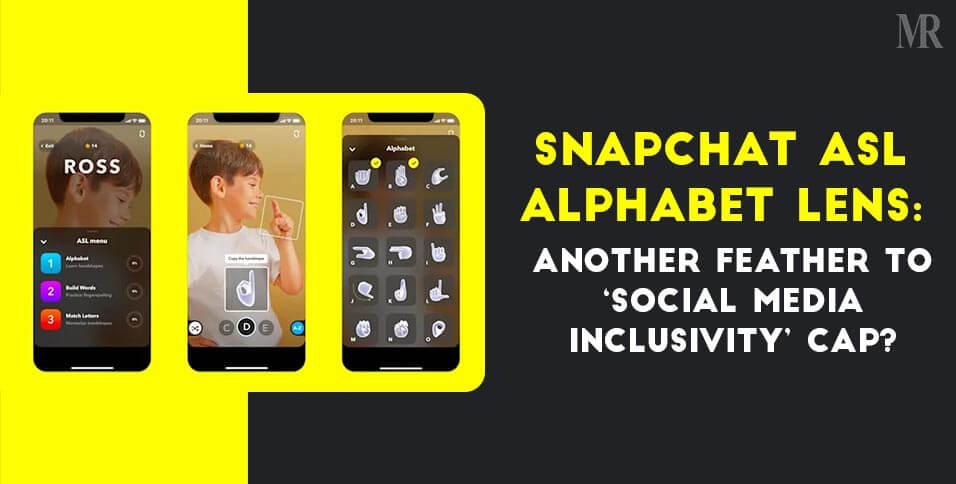Social media is here to stay, evolve and grow. During the past few years, social media has proven highly beneficial for users and brands worldwide to facilitate the flow of information among people. In recent times, social media has shown its potential to open doors of opportunity for differently-abled or disabled people. With Snapchat introducing its ASL Alphabet Lens, the doors of inclusivity seem to have opened wider than before.
What is with the new Snapchat ASL Alphabet Lens?
Snapchat is teaching users how to communicate using sign language. It has introduced an ASL Alphabet Lens that expands the American Sign Language learning experience in an interactive manner. Using the new ASL Lens, you can learn how to fingerspell your name using individual letters. Moreover, you can put your knowledge to the test and practice the ASL alphabet and play two games.
What is the purpose?
The purpose behind the lens is to use augmented reality to help more people communicate online while expanding Snapchat’s audience in the process.
How was it developed?
Snapchat solely relied on Deaf and Hard-of-Hearing team members to develop the lens.
How does it work?
The ASL Alphabet Lens uses AI technology, including computer vision and machine learning, to recognize hand gestures.
Is Social Media equipped with enough tools for the disabled?
Although the answer is a hard yes, we still have miles to go. With that said, no social media platform is cent percent accessible to everyone (people with and without disabilities) at the same time. However, what these platforms can do is standardize and improve the accessibility of the content.
For instance, the popular image and video-posting social media platform Instagram has become more friendly to its blind and visually impaired users through its alt text feature. Instagram’s alt text feature is the description that identifies the content of an image and allows screen readers to describe photos to blind and visually impaired users.
In addition, the closed captioning feature also proves advantageous for people with hearing impairments. Closed captioning or CC allows the text on the screen for all auditory signals on multimedia. It is similar to subtitles in foreign films but adds non-verbal sounds such as sirens, laughter, etc.
Social media’s value for the differently-abled lies in its potential to offer opportunities that otherwise may have been unknown. What can be done is to be constant with providing access to opportunities that can be open to everyone. This can be done through the development of better assistive technology as well as by encouraging product managers to design sites with better accessibility.
Also Read: Snapchat to introduce a new search feature
















